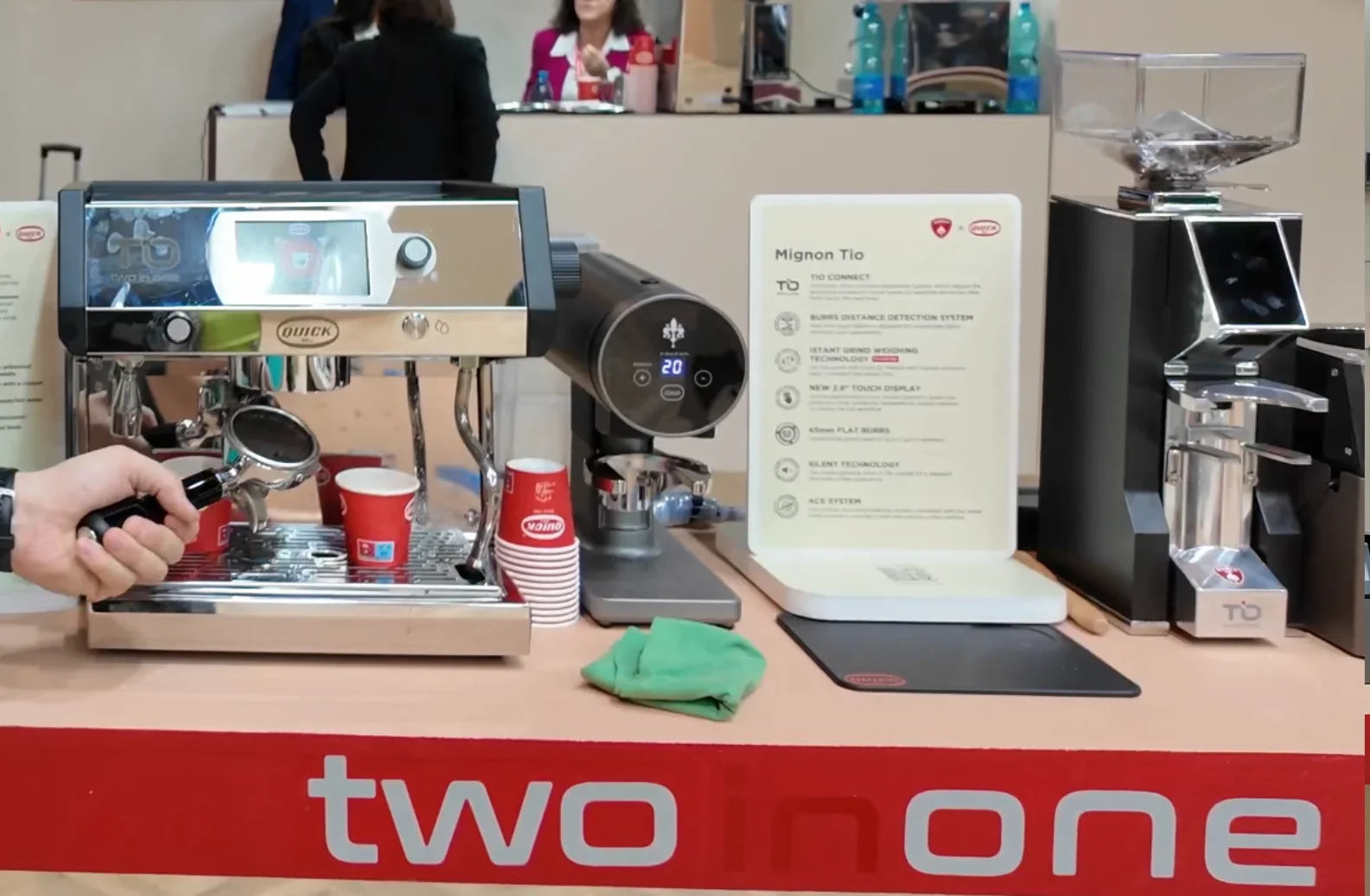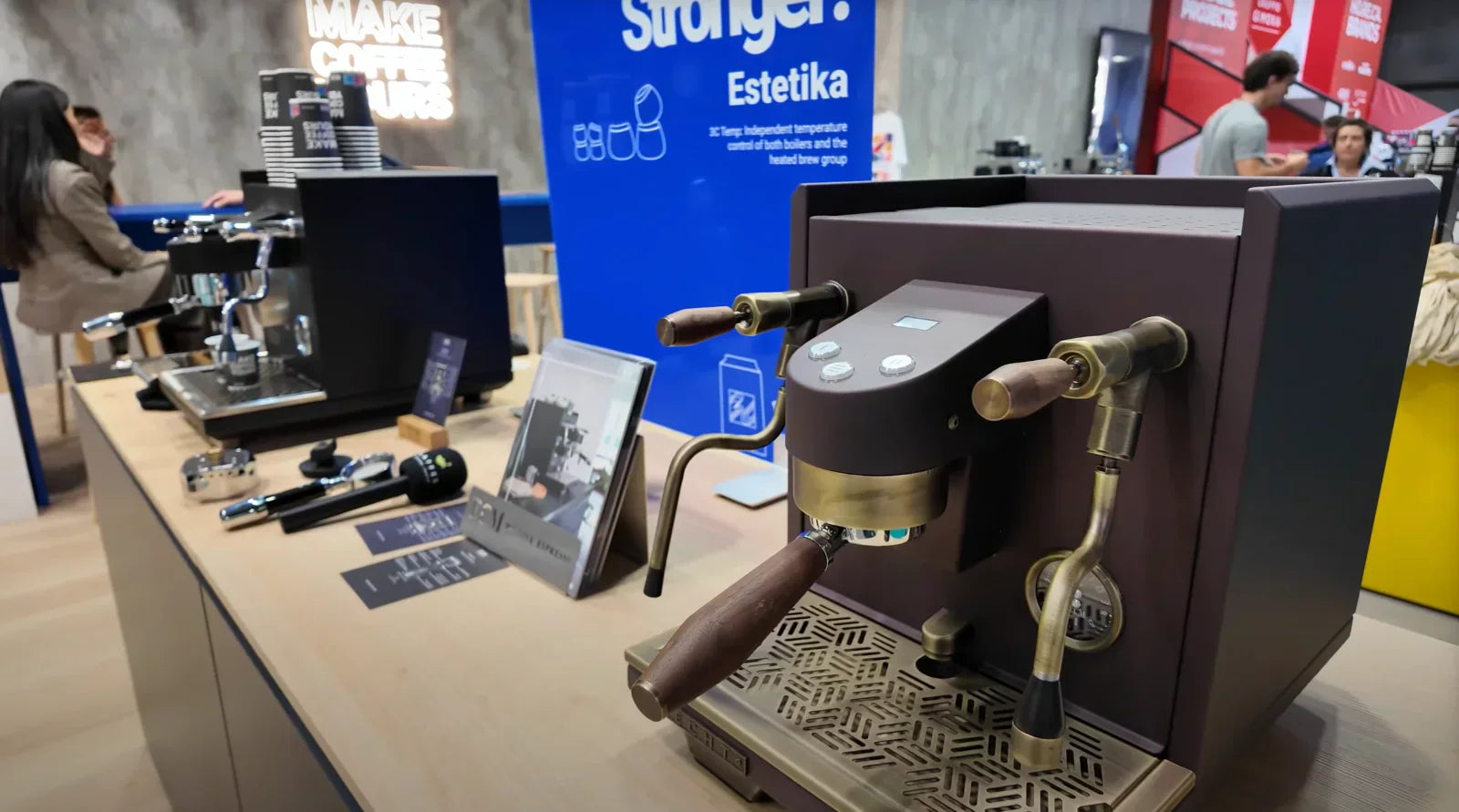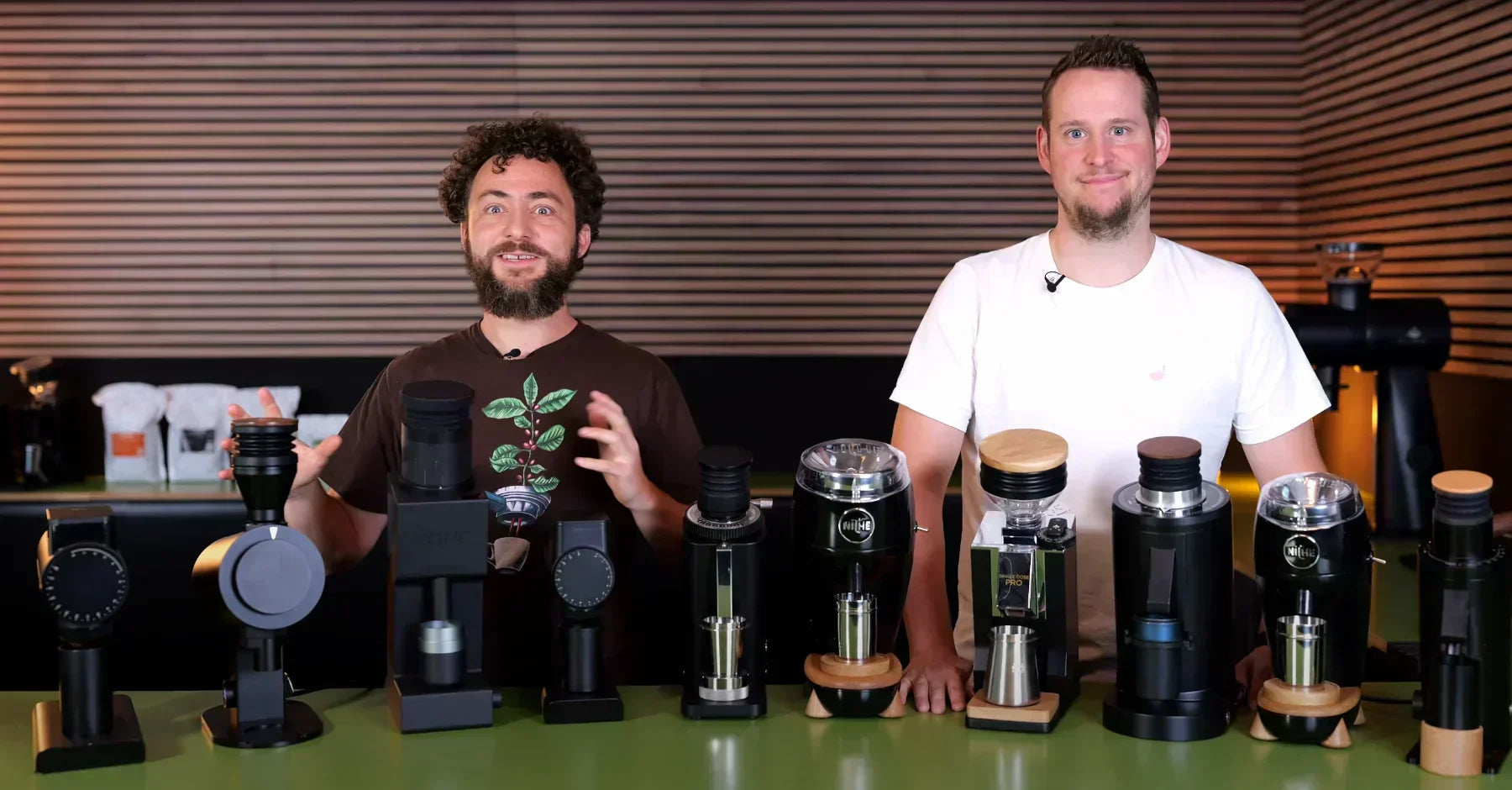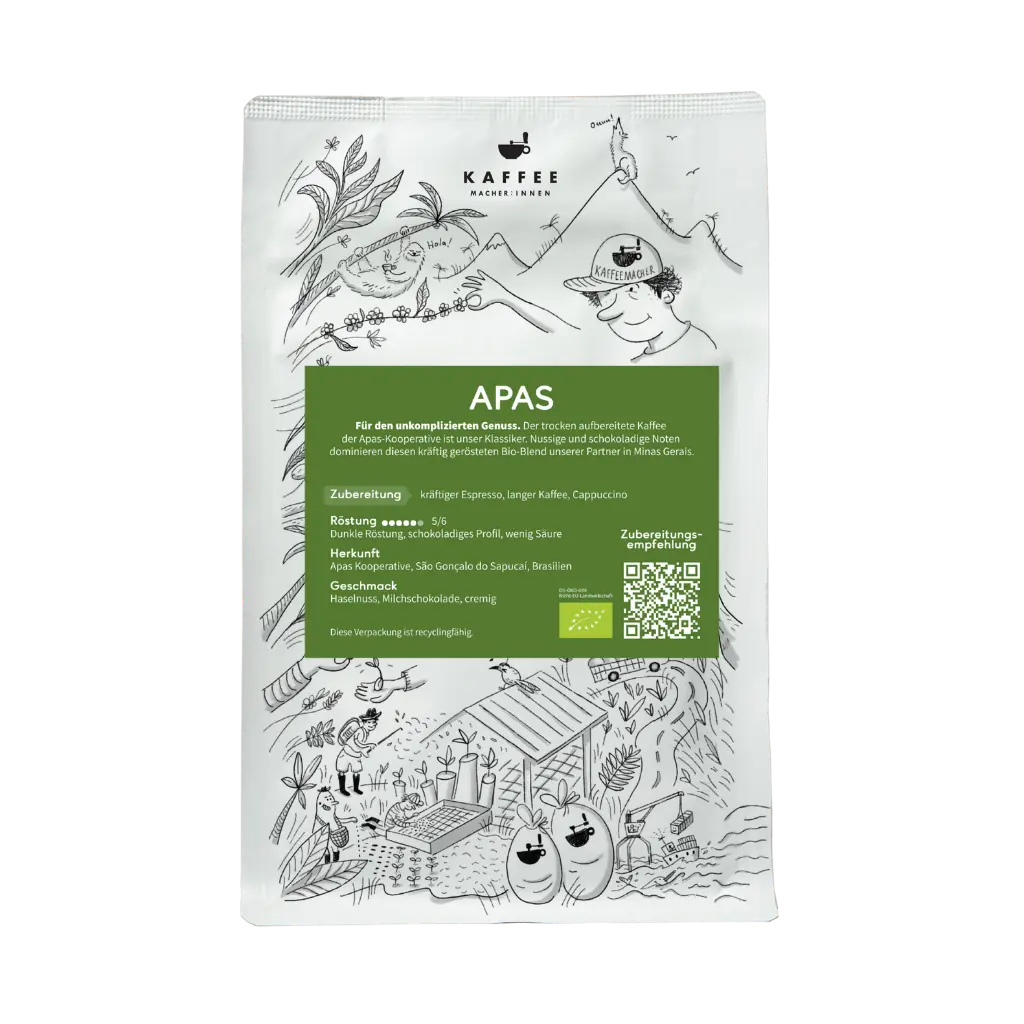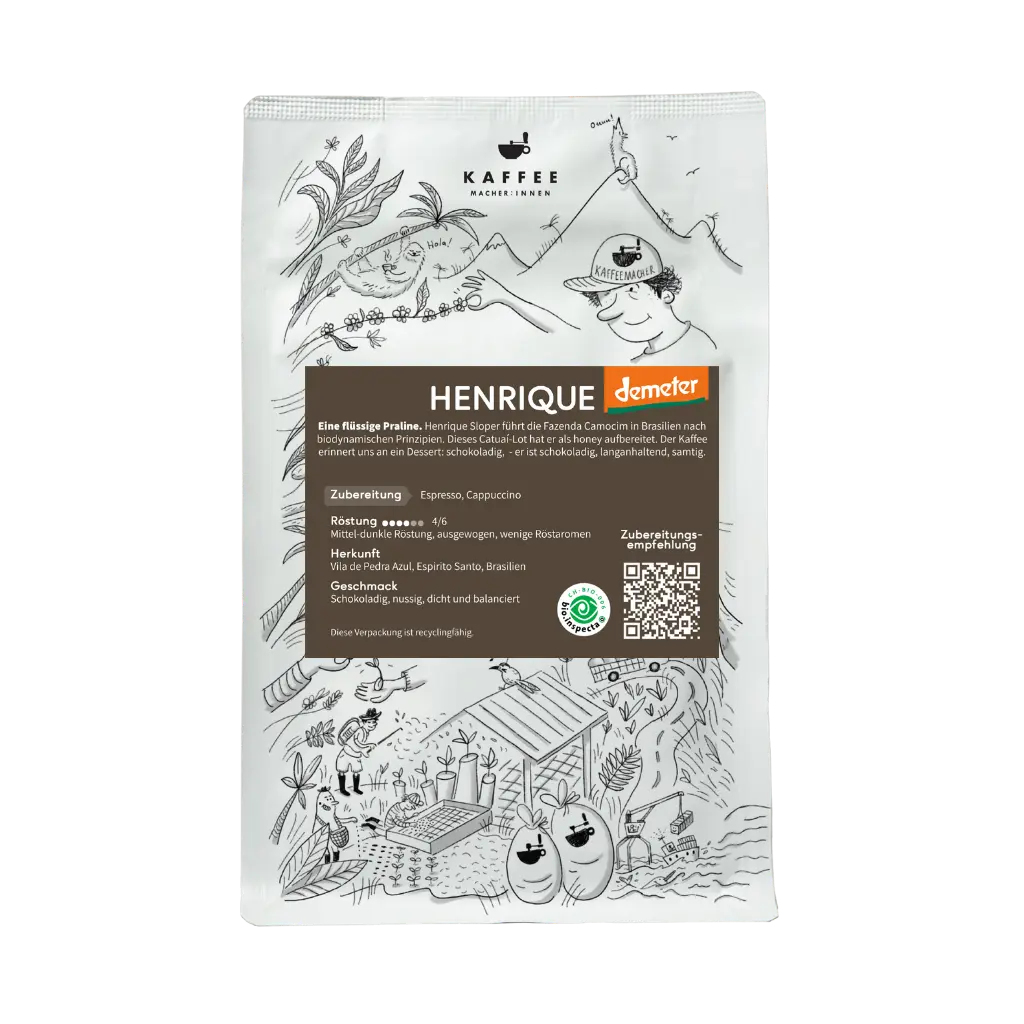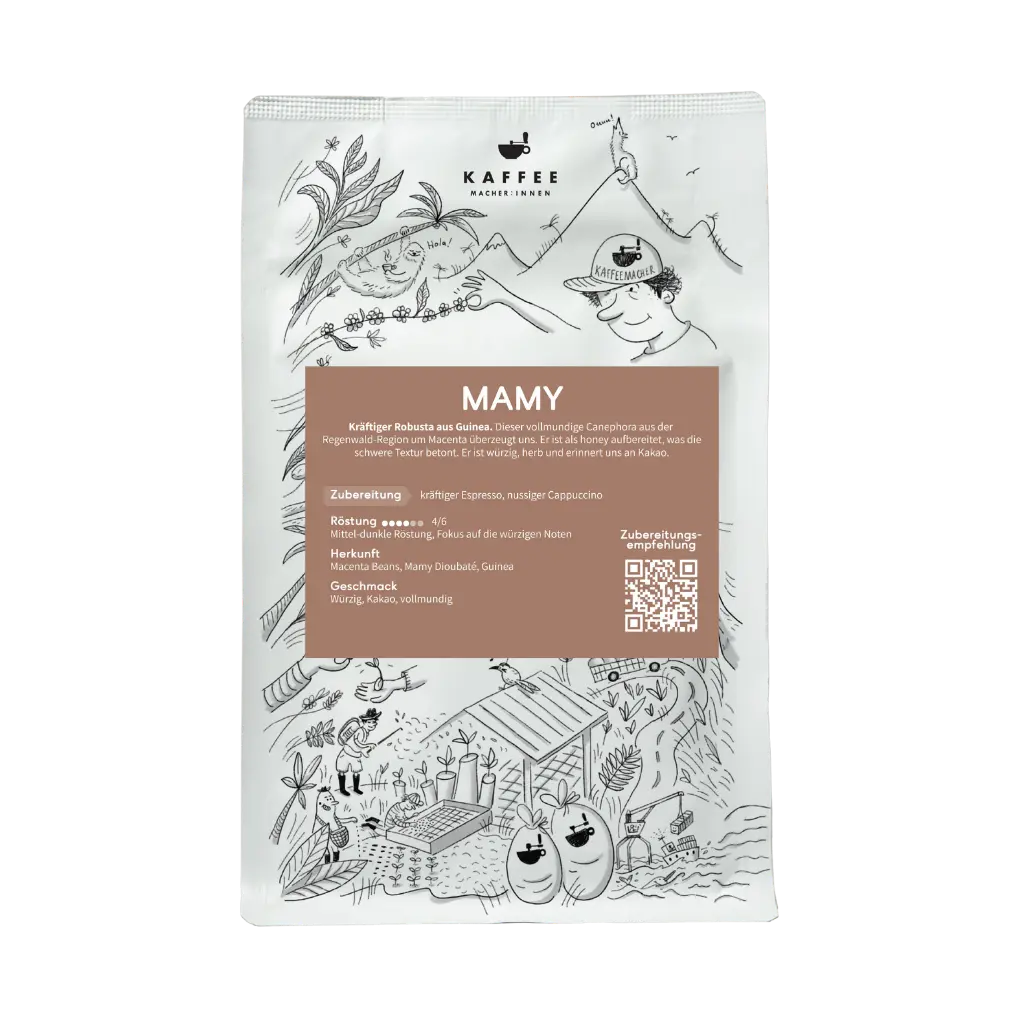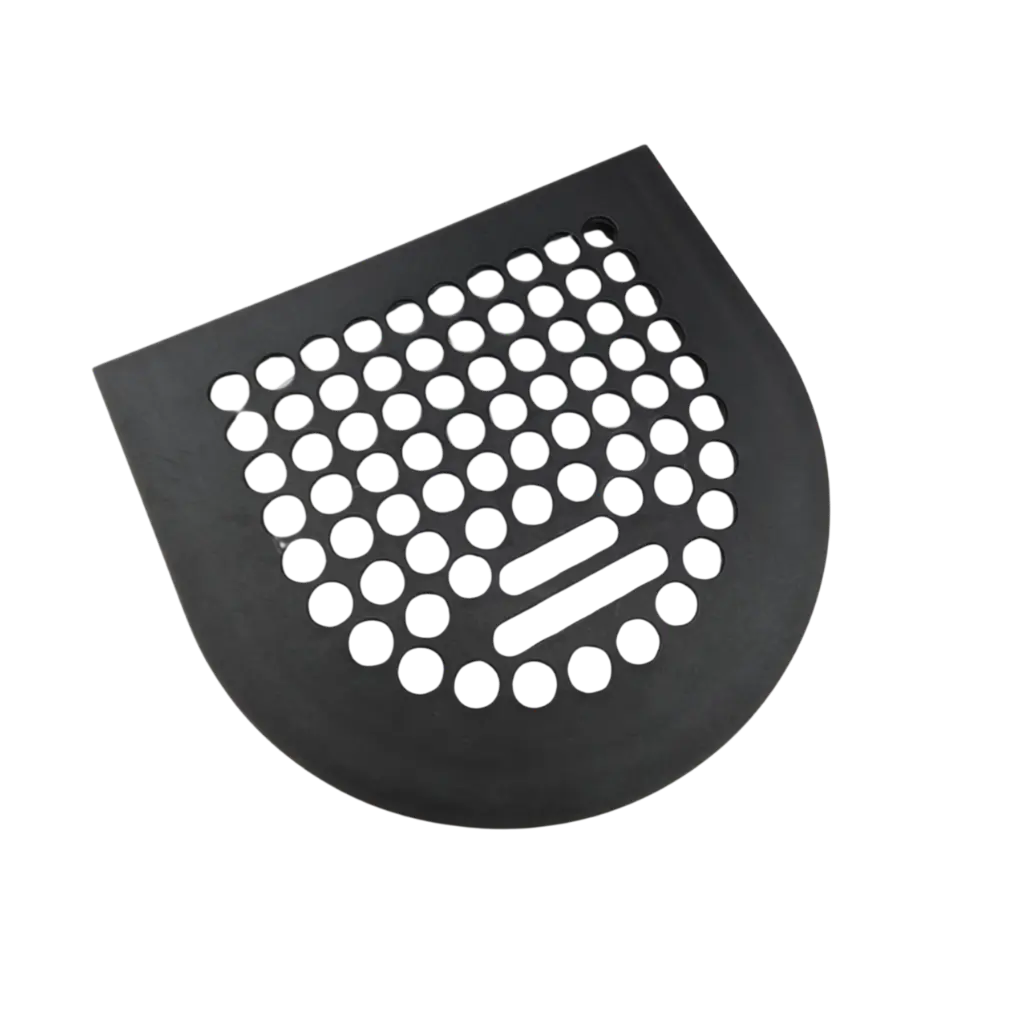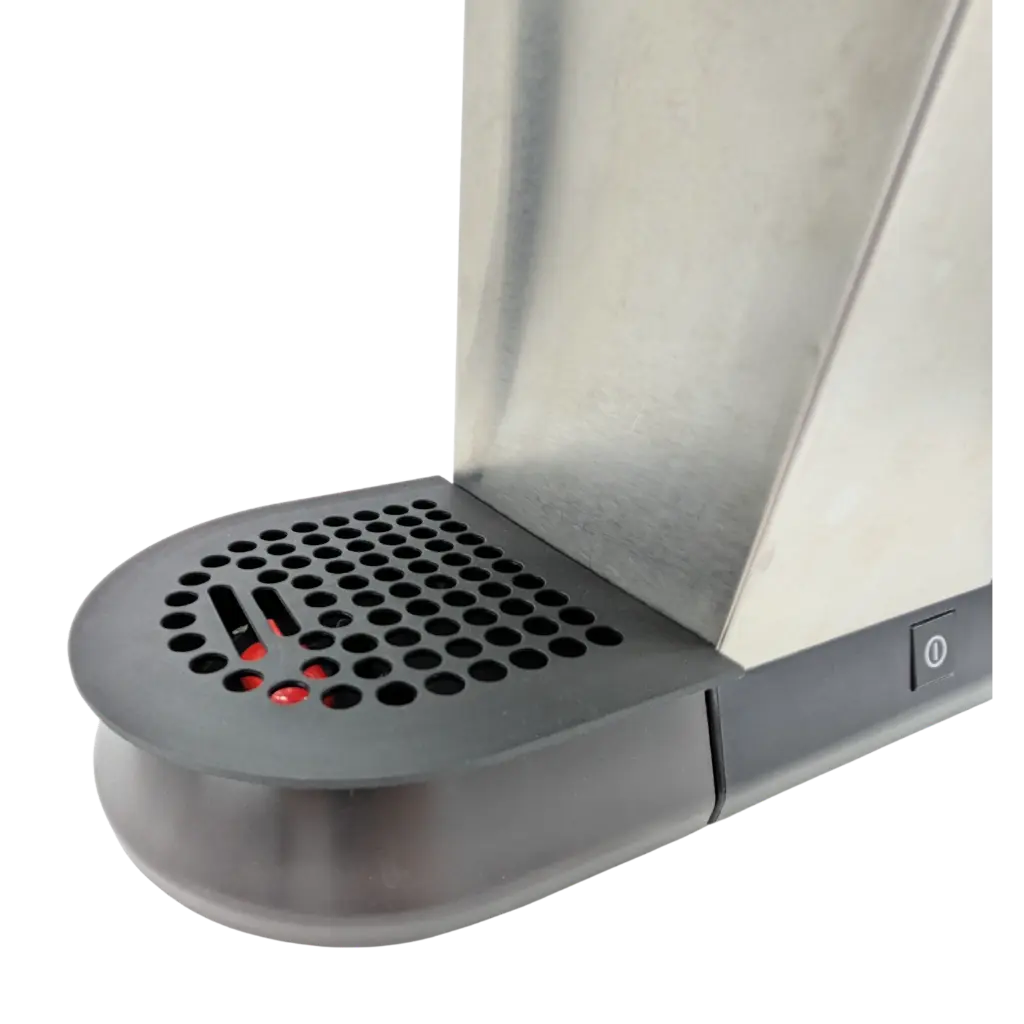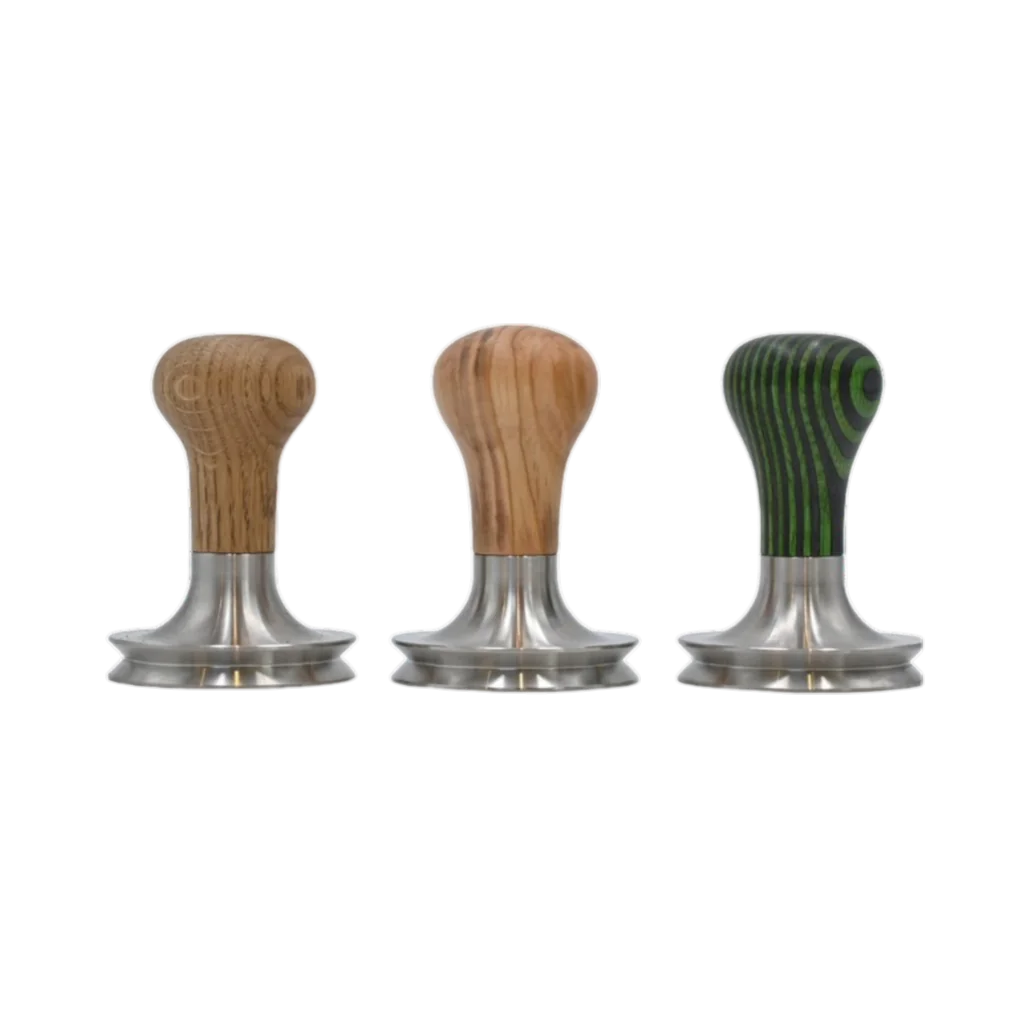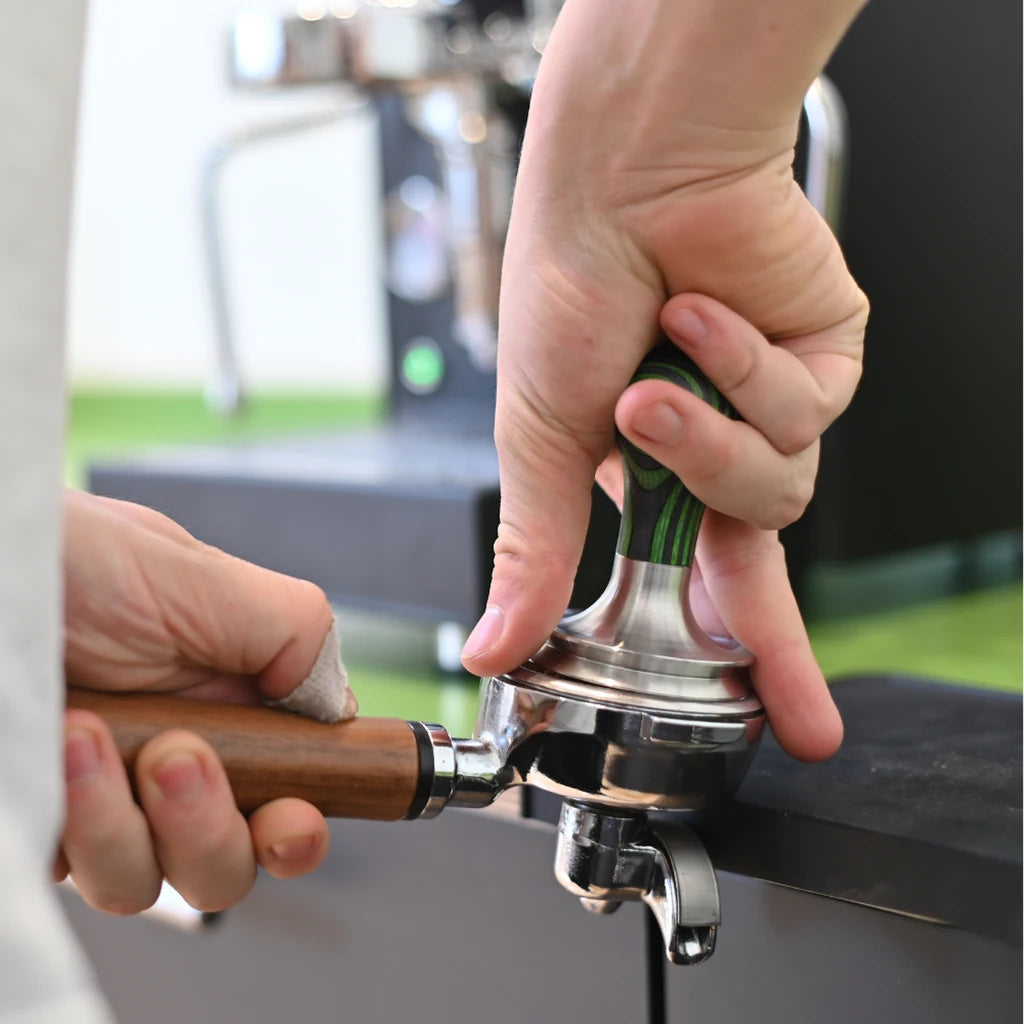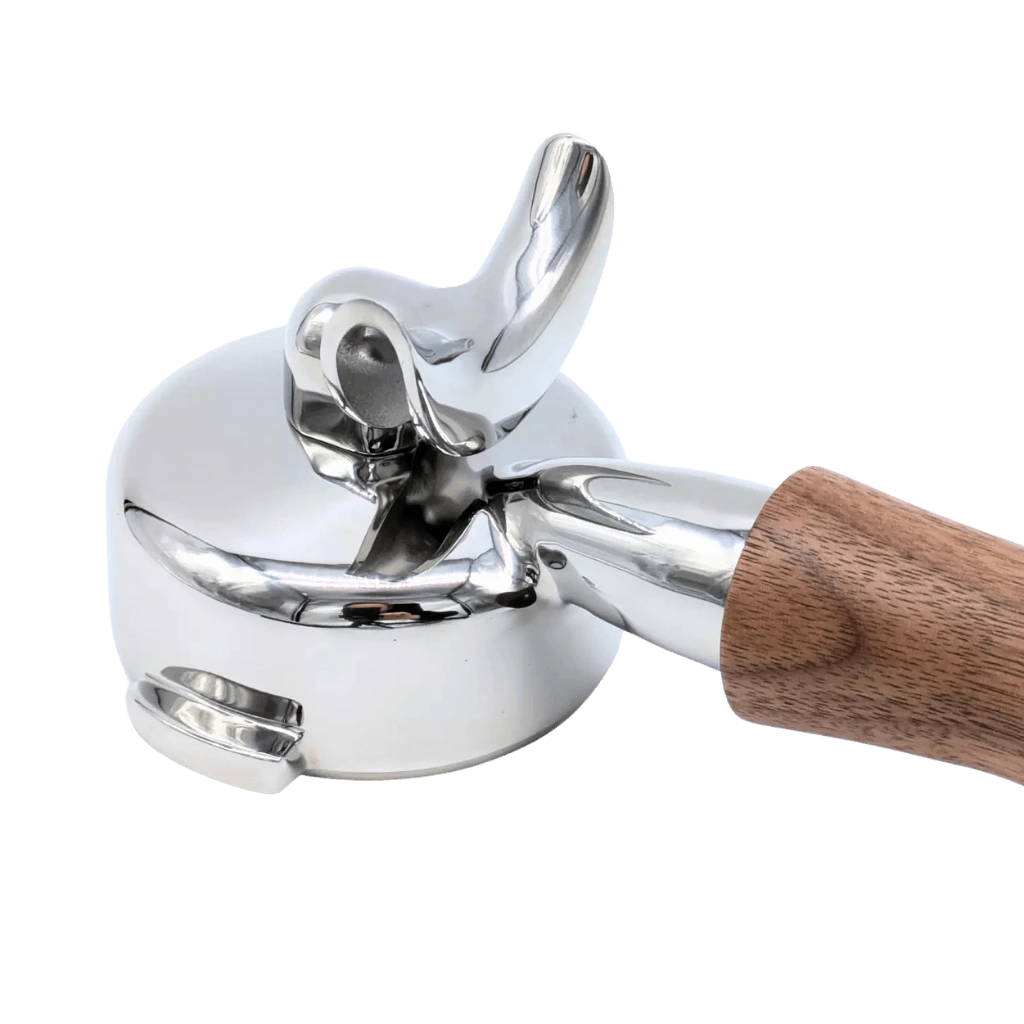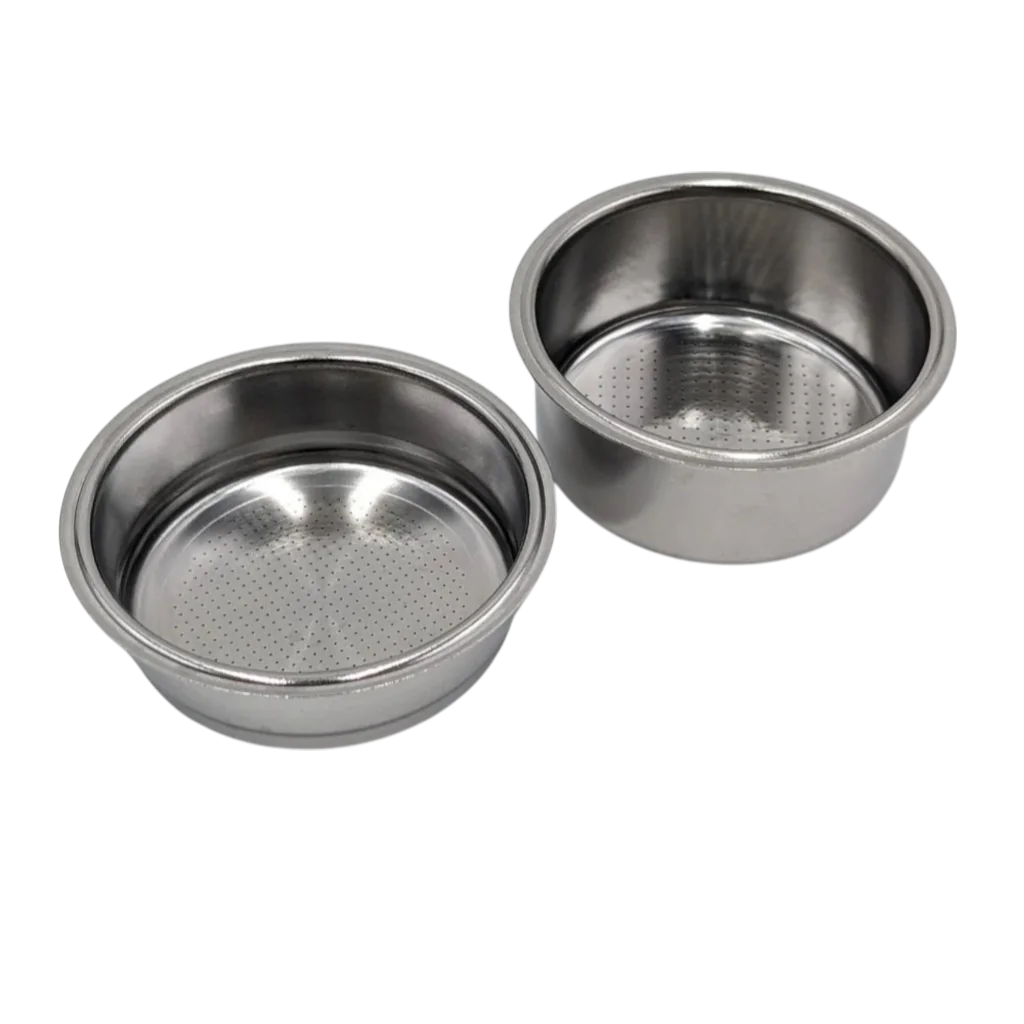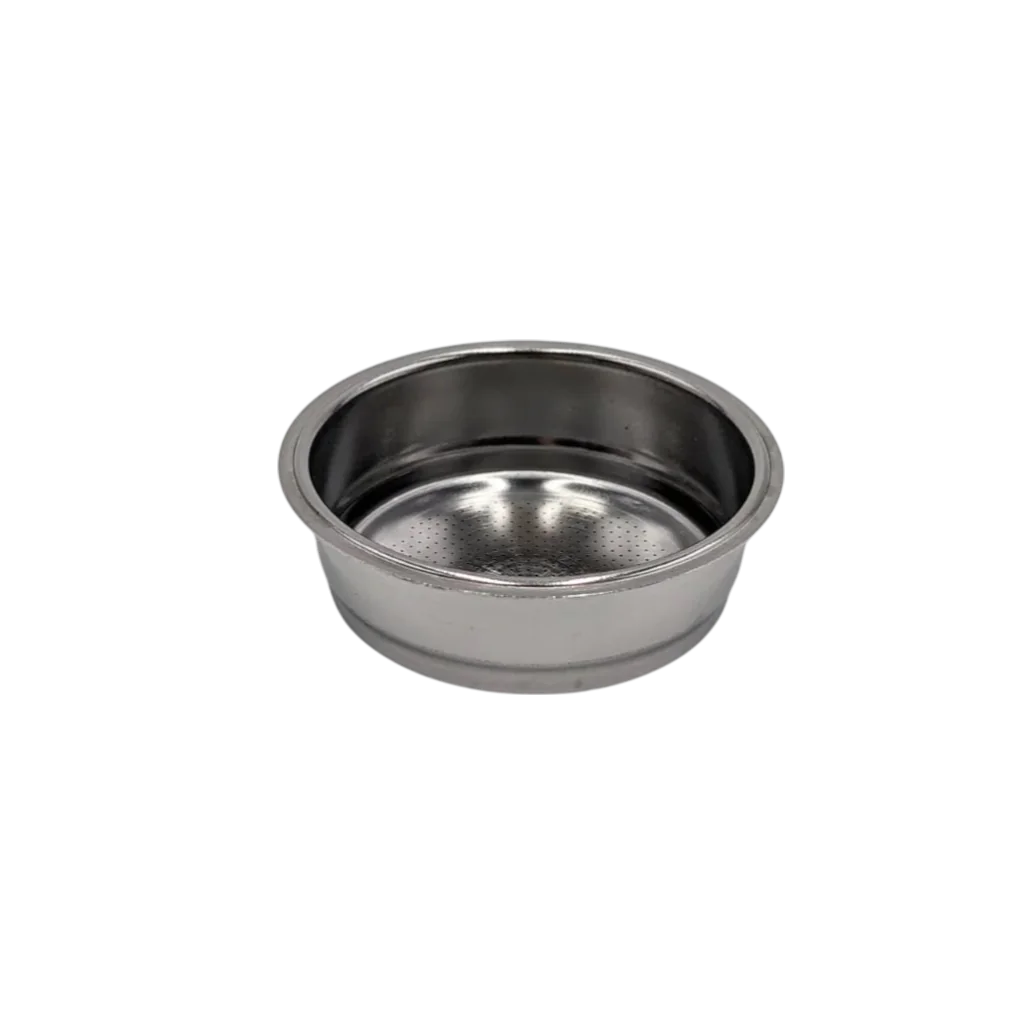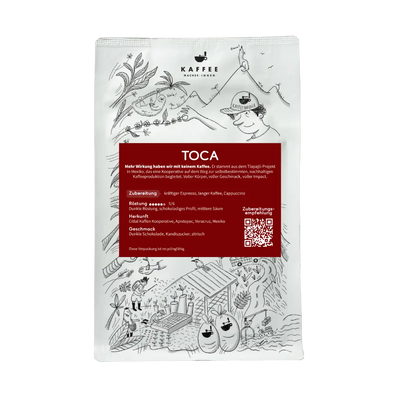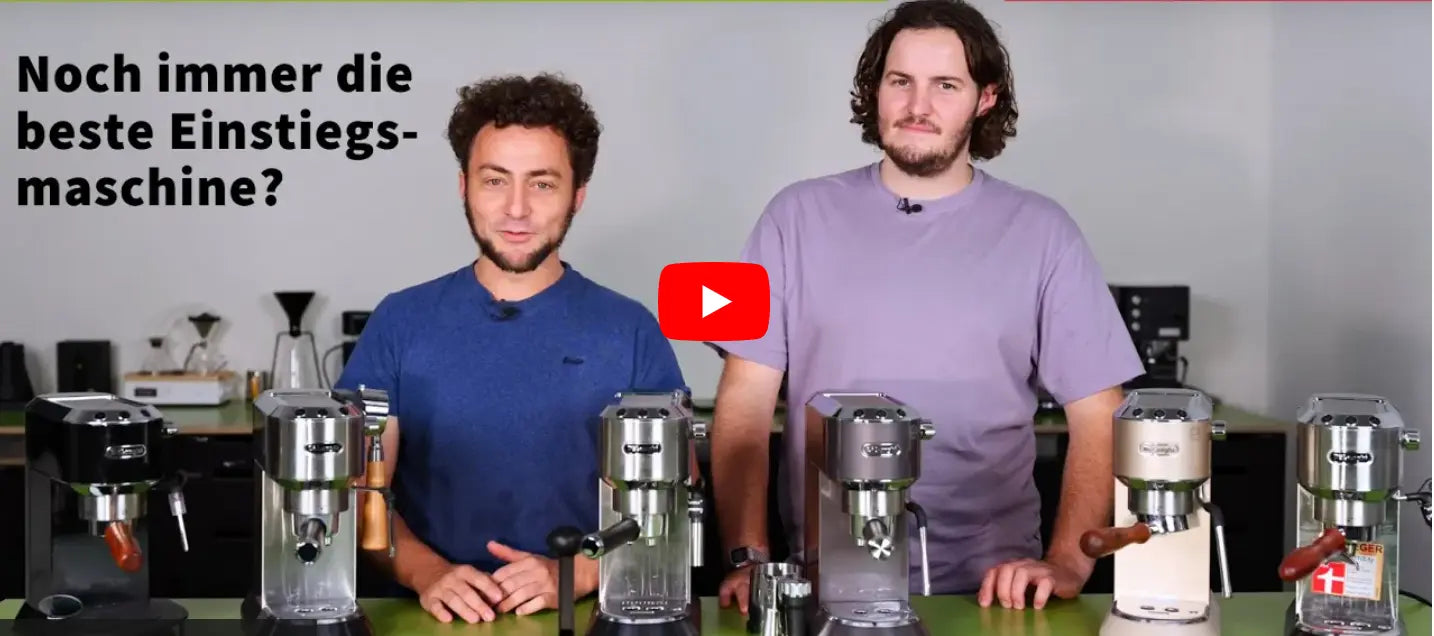Reading time: 4 minutes. This article is a short blog. You can access the detailed blog article here .
Step by step to the perfect espresso
There are many myths surrounding espresso, the most concentrated coffee drink. In order for the preparation to be successful, it is worth being instructed by an experienced barista, as there are a number of pitfalls on the way to the perfect result in the cup. To give you a brief overview, we have created a series of videos as a guide.
What taste type are you?
Espresso is a highly concentrated drink that potentiates all the aromas in the coffee and from the roasting. So acidity or bitterness can dominate. You can control a large part of it through extraction.
This explains the success of capsule coffee - the brewing process is taken out of the hands of the consumer - so the coffee always turns out the same.
Southern Italian roasts usually emphasize bitterness, Northern Italian roasts are balanced, Third Wave Coffee emphasizes the enzymatic fruit aromas with distinctive acidity.
In our article “Which coffee tastes best?” We'll shed light on the topic and help you find your type of coffee and choose the beans that are right for you.
The broth recipe
Various variables influence espresso preparation. You should set a constant with the amount of coffee you use. Sieves usually indicate the optimal filling quantity - you should deviate from this by +/- 1g. If there is no information on the sieve, proceed as follows: Clamp the portafilter with espresso-finely ground coffee. This should happen without resistance and no imprint should be visible in the coffee bed before the start of extraction (e.g. E61 brewing lumps often 17g, DeLonghi Dedica 14-15g).
We use the double spout portafilter because we produce better sensory results this way.
Ground coffee and extracted coffee in the cup should be in proportion to each other. To do this, we weigh the coffee grounds and the extracted result. A scale that reacts quickly to weight changes is essential.
For a strong result, use the ratio 1 to 2 (e.g. 17g coffee “in” and 34g coffee “out”) - more balanced would be 1 to 2.5, for a result close to your current full or capsule machine, a ratio of 1 also works to 3.
The preparation
Unclamp the portafilter preheated through the brewing group - weigh the portafilter or use a measuring cup for weighing - add the ground coffee and distribute it evenly and tamp it straight.
Video instructions - how to tame correctly
Based on your observations, you can adjust the running time of the grinder, but be careful - every change in the grinding level also changes the amount of coffee!
If the coffee bed is not perfectly prepared, the water will seek the path of least resistance. This results in channeling and sour/thin espresso.
Clamp the portafilter, place the scale with the cup underneath and extract. A scale with a timer is helpful so that you can measure the extraction time. Depending on the bean used, the extraction should take a certain amount of time - if it runs too short (make the grinding finer), it becomes sour, if it runs too long (make the grinding coarser) it becomes bitter.
The right grind level
The degree of grinding determines the resistance during the extraction. The right degree of grinding in relation to our brewing recipe results in a delicious extraction.
Fast extraction -> set the mill finer
Grind in small steps and always out of the grinder, because there is already ground coffee sitting between the grinding disks.
Caution: Home grinders should only be set finer when the discs are running
Slow extraction -> make the mill coarser
Follow the same procedure as for finer adjustment.
The fine tuning
If your result is acceptable, it's time to tune.
Every coffee has a different grind and an optimal extraction time - there are no hard and fast rules, but there are a few guidelines. What matters is the result in the cup.
- Dark Roasts – 20-25 seconds
- Medium Roasts – 25-30 seconds
- Shorter extractions emphasize acidity
- Longer extractions emphasize bitterness/body
- Too watery -> adjust the brewing recipe, e.g. from 1 to 3 to 1 to 2.5
- Too concentrated -> adjust the brewing recipe e.g. from 1 to 2 to 1 to 2.5
Once you have achieved the perfect result for yourself, quickly program the mill and check your recipe every few extractions. Especially in the morning, the coffee behaves differently due to the weather conditions. Small corrections usually help here.
If things still don't go smoothly for you, take another look at the video here:
20 mistakes when making espresso
Ja, warum nicht. Es gibt verschiedene Ansätze. Damit kommst du sicherlich zu einem tollen Ergebnis.
Grüsse
Andrea
Eure Beiträge sind cool, ich habe schon viel lernen dürfen. Mir ist dabei aufgefallen, dass ihr hier von einer Temperatur von 94 Grad schreibt, in den aktuellen Maschinentests jedoch meistens von 93 Grad die Rede ist. Ist 93 Grad aktueller, als Ausgangspunkt?
Lieber Gruss Micha
Danke für euren Content, dank euch trinke ich guten Kaffee zuhause. Grüessli aus Biel, Pascal

Danke dir! Mahlst du frisch und ist dein Kaffee auch frisch geröstet? Das macht den grossen Unterschied:)
Vielen Dank und beste Grüsse, Lukas

Das ist ganz normal. Die Widerstandsfähigkeit des Kaffeekuchens nimmt während der Extraktion stetig ab.

Dann ruhig noch feiner stellen:) Dann wirds noch leckerer:)
Ich habe eine etwas ältere Isomac Milenium TEA von 2007. Obwohl ich schon seit vielen Jahren mit Siebträgern arbeite, gelingt mir hier die Einstellung nicht. Ich stelle meine Quamar Mühle so ein, dass der Kaffee knapp klumpt. Es daurrt dan relativ lange, bis die ersten Tropfen kommen. Danach läuft der Espresso viel zu schnell. Die Maschine heizt schnell auf und der Brühkopf ist auch richtig heiß. Kann es sein, dass das Gerät nicht richtig justiert ist?
Herzliche Grüße, Frank
ich bin da etwas am verzweifeln: Habe seit kurzem meine Profitec Go im Einsatz. Ich wiege 18gr Kaffee im Doppelsieb. Egal wie ich tampe und verteile, es kommt immer links deutlich mehr als rechts (links über 30gr, rechts 20gr). Auch wenn ich absichtlich schräg andrücke, links läufts einfach schneller. Kann das noch an was anderem liegen als an meiner "Tampingkompetenz"? :-)

Grundsätzlich muss man aber sagen, dass der Siebträger durch die Form seiner Ausflüsse dazu neigt den Kaffee nicht genau gleich auf beide Tassen zu verteilen. Als Alternative könntest du dich auch um einen andern 58mm Siebträger umschauen. Gruss Thomas

Doppelten Espresso. Habt ihr da eine Faustregel wie viel Kaffeebohnen ich verwenden soll und wie viel Kaffee am Ende raus kommen soll?
Außerdem habe ich gelassen das bei Espresso der Mahlgrad fein sein soll, ist das auch richtig ?

Beim Einersieb sind es ca. 9g die hineinpassen, bedeutet dann 22,5 g Espresso out.
Beide Extraktionen sollten ca. 25-30 Sekunden gehen. So musst du daher den Mahlgrad anpassen. Espresso ist eher fein gemahlen.
Hoffe, das hilft dir weiter. Grüsse Pascal
LG Peter

I bought coffee from Ethiopia, which ist very acid, even I have 1:2,. Do you have a Tipp how I can Balance my coffee?

• quickmill Carola
• ECM Puristika
• coffe 969 Elba
Gruß
Rainer

mit der
** Dedica EC 685 M **
Siebträger von JoeFrex - https://www.amazon.de/gp/product/B0BBZS78C4/ref=ppx_yo_dt_b_search_asin_title?ie=UTF8&psc=1
Sieb für Doppios von IMS - https://www.amazon.de/dp/B09LQZX81L?ref=ppx_yo2ov_dt_b_product_details&th=1
und
** G-Iota Single Dosing Mühle **
EU Version 5!
Italmill 64 mm Scheibenmahlwerk
Gerade einmal beim Singl-Espresso auf 13 sec (Gestoppt ab Start Pre-Infusion bis 25ml in der Tasse)
Der Mahlgrad ist mit Skalenstrich 22 bei der G-Iota, haptisch schon sehr fein. Also tatsächlich noch feiner gehen?
Wird das dann nicht schnell zu bitter?
PS: Gebt ihr auch Kurse, bei denen man mit seinem Home-Equipment anrücken und hantieren kann.
Würde ich voll feiern! :D

Ja bei unseren Home Barista Kursen Niveau 1&2 kannst du dein eigenes Equipment von zuhause mitbringen. Gruss Thomas

Lange Rede kurzer Sinn: wird bei singelshots idR. Der mahlgrad zusätzlich angepasst um auf die 20-30 Sekunden bis zur gewünschten espressomenge zu kommen oder wie wird da vor gegangen?
Danke schon mal :)



Finde eure Videos und Beiträge einfach toll!
Nach Stundenlangem schauen der Videos habe ich mir tatsächlich meine erste Siebträgermaschine gegönnt.
Ich bin momentan in der Versuchsphase und da habe ich mal eine Frage an euch.
Ich habe zur Zeitmessung eine Waage und die Zeitanzeige an der Siebträgermaschine. Wenn ich die Extraktion starte beginnt die Maschine natürlich bereits zu zählen, die Wage aber erst ca. 7 - 8 Sekunden später sobald der erste Tropfen in die Tasse fällt.
Da erhalte ich zwei ziemlich verschiedene Extraktionszeiten.
Welche würdet Ihr als Referenz für die Empfehlung der 20 -30 Sekunden nehmen?
Weiter so! :)
Liebe Grüsse
Dennis


Danke im Voraus.
Arnold

Bei der Gelegenheit: Bitte testet doch mal die Quick Mill POP. Gerade hab ich Benjamin sagen hören "90% der Maschinendefekte kommen von nicht ausreichender Entkalkung". Neben vielen anderen Vorteilen haben Thermoblock-Maschinen den Vorteil, dass sie relativ kalkunempfindlich sind bzw selten entkalkt werden müssen. Die POP ist für eine Maschine mit PID, regelbarem Druckventil, möglicher Pre-Infusion und Shot-Timer sehr günstig - falls, ja FALLS sie auch recht temperaturstabil ist! Und um das zu wissen, braucht es Euren Test.
BITTE!!
Ja die POP steht bei uns im Regal und sobald wir wieder mehr Luft zum testen haben, gehts an die Maschine. Ein Test der Maschine ist definitiv geplant.
Grüsse
Andrea
Lieben Dank!
erstmal vielen Dank für Eure sehr hilfreichen Videos und Erklärungen….Wahnsinn!!!!
Eine Sache würde ich gerne nochmal nachfragen.
Wenn ich ein 12g-Sieb verwende, hab ich weniger Pulver und weniger Wasser und trotzdem soll die Extraktion rund 24s dauern, richtig?
Dann muss gegenüber einem doppeltem Espresso der Mahlgrad doch deutlich feiner sein. Ist das so korrekt oder hab ich da was falsch verstanden?
Viele Grüße
Peter


nachdem ich viele Videos von euch gesehen haben (danke für die viele Mühe) habe ich mich für eine Graef Marchesa + Smart Grinder Pro entschieden. Ich habe jetzt das Problem, dass ich das Kaffeemehl einfach nicht richtig eingestellt bekomme. Entweder läuft der Espresso mit 15 Sekunden viel zu schnell, oder es tröpfelt nur, bis die Maschine dann mit über 12 bar abbricht. Ich habe so langsam keine Idee mehr. In einem Kaffee Forum (zur Marchesa) hatte man mir geantwortet, dass mein Kaffee (testweise Rossmann Samocca) zu schlecht sei. In Videos von anderen Youtubern ist aber zu sehen, dass mit diesem Kaffee durchaus ein Espresso in 25 Sekunden herstellbar ist. Wie gehe ich jetzt also am besten vor? Über eine kurze Hilfestellung wäre ich sehr erfreut. Gruß, Arne

danke für dein Feedback. In der Tat, ein anderer Kaffee hat geholfen. Es ist noch nicht perfekt, aber ich komme zumindest an die 25-30 Sekunden Bezugszeit ran. Wie bei Eurem Test zur Graef Marchesa ist es auch bei mir im Bereich 12 bar. Vielleicht ist dieser Hinweis ja auch wichtig für andere User. VG, Arne
Ich hab schon feiner gemahlen,noch feiner geht fast nicht, ich tamper denk ich auch solide gleichbleibend, aber jeder kaffee egal wie und was ich mache ist unter extrahiert, habt ihr n tipp für mich
Danke im voraus,
L.G. Kim

Vielen Dank an euch für die hilfreichen Videos, gerade auch zu Grundlagen. Ich habe eben die Mühle gewechselt zu einer Eureka Specialita für eine Siebträger Lelit. Die Standard 57mm Siebel sind hier mit 7gr angegeben und ich bin im Moment auch wie mit der alten Mühle auf knapp 9 gr gegangen. Der Puck ist trotzdem immer matschig, auch wenn die Extraktionszeit dann im Bereich 23 - 26s liegt. Das ist für mich neu mit der neuen Mühle. Habt ihr eine Idee, woran das liegen mag ?

Vielen Dank für eure hilfreichen Tipps und die Einführung in die Welt der Kaffeezubereitung. Diese waren meine Stütze beim Einstieg vor ca. 2 Jahren. Gestützt auf meine berufliche Erfahrung in der Prozessgestaltung und den ersten Beobachtungen habe ich meinen Ablauf bei der Espressozubereitung nun aber etwas umgestellt und möchte dies gerne mit euch teilen. Dazu habe ich die Prinzipien der Prozessoptimierung konsequent angewandt.
Die Hauptänderung betrifft die Zielgrösse: Die Extraktion stoppe ich beim Erreichen der gewünschten Extraktionszeit und nicht beim Erreichen des Zielgewichts (resp. der Ziel-Brew-Ratio). Hier die Gründe dafür:
1. Die Extraktionszeit ist eine kritische Variable (hohe Kritikalität), da eine Sekunde mehr oder weniger sensorisch deutlich spürbar ist (ausgehend von der optimalen Extraktionszeit dieses Kaffees). Die Kritikalität der Brew-Ratio ist in diesem Prozess wesentlich tiefer. Grundlage: 1 Sekunde Extraktion entspricht ca. 2 Gramm Kaffee in der Tasse und damit ca. 0.1 Veränderung in der Brew-Ratio (also z.B. 1:2.4 anstatt 1:2.5). Dies ist zwar für Kenner ebenfalls spürbar aber nicht im gleichen Mass wie die Veränderung der Extraktionszeit.
2. Während der Extraktion benötige ich keine Waage, die ich umständlich unter den Siebträger platzieren muss. Der Prozess wird dadurch wesentlich vereinfacht.
3. Wenn ich Besuch habe, bin ich weniger gestresst. Ich kann einen Espresso, bei dem die Brew-Ratio um +/- 0.2 schwankt problemlos anbieten. Wenn aber der Kaffee sauer oder bitter ist, werden sich meine Gäste beschweren (natürlich erst zuhause, wenn ich das nicht mehr mitbekomme).
4. Da bei meiner Siebträgermaschine ein Timer integriert ist, benötige ich (während der Extraktion) keine weiteren Werkzeuge oder Geräte. Die Kontrolle der Kaffeemenge resp. der Brew-Ratio erfolgt nach der Extraktion und kann bei hohem Durchsatz auch problemlos mal weggelassen werden.
Vielleicht kann dieser Tipp auch anderen dienlich sein. Ich bin nun auf jeden Fall entspannter, lockerer bei der Kaffeezubereitung und ich musste seit dieser Umstellung keinen einzigen Espresso mehr die Spüle runter kippen.
FG Hans Peter


Könntet ihr mal Espressi machen mit 9, 8 oder 7 bar!
Es wurde mich interessieren, wie sich der Espresso ändert.

Auch ich verwende aktuell 17g Espresso für 2 Tassen Espresso. Am Ende will ich aber doch 25-30 ml in Jeder Tasse haben. Das wäre dann ein Brew-Ratio von 1:3 - 1:3,5.
Sind bei 1:2, was Ihr anstrebt, dann am Ende wirklich nicht mehr als 17 ml in Euren Tassen? Das ist erschreckend Wenig Inhalt und würde mich als in der Espresso-Welt nicht bewanderten Gast in einem Kaffee vermutlich verärgern.

Ich hätte noch eine Frage zur Füllmenge. Woher sehe/weiß ich, ob meine 17 g richtig waren oder ob 18 g besser wären? Wenn ich es richtig verstanden habe, müsste ich mit 17 g und feiner mahlen das gleiche (oder ein ähnliches) Ergebnis erhalten, wie mit 18 g und etwas gröber mahlen. Woher weiß ich dann, auf welche Menge ich gehen sollte? Auf meinem Sieb steht keine Angabe, daran kann ich mich nicht orientieren. Maschine ist eine Quick Mill Pippa.


Bei einem Ristretto verwendet man ein Brühverhältnis von 1:1, damit alles sehr kompakt ist. Viel Spass beim Ausprobieren.
Gruss Pascal
Erst einmal ganz herzlichen Dank für eure tollen Videos!
Immer wieder erfrischend und auf den Punkt gebracht!
Wir haben jetzt noch eine kleine Lelit und bald eine Profitec PRO 700.
Ergibt sich bei der beschriebenen Vorgehensweise automatisch der richtige Druck? Oder muss dabei noch irgendetwas beachtet werden?
Herzlichen Dank und macht weiter so!
Viele Grüße in die Schweiz
Christian

vielen Dank für die wunderbaren Tipps für den Einstieg ins Siebträger-Game! Ich habe mir kürzlich die Gaggia New Classic mit dem Sage Smart Grinder Pro zugelegt und mich ganz gut eingearbeitet.
Leider schwankt bei mir die Extraktionszeit bei einer eigentlich vernünftigen Mahlgradeinstellung sehr stark. Beziehe ich heute einen Doppelten in 30 Sek., kann es später oder morgen auch schon mal in 23 Sek. durchgelaufen sein. Von meinem Gefühl her, mache ich die Vorbereitung (Leveln, Tampen etc.) annähernd gleich. Woher können diese großen Zeitunterschiede kommen? Dem Smart Grinder sagt man ja eigentlich einen recht konstant bleibenden Mahlgrad nach, sodass ich diese Fehlerquelle ausschließen kann. Kann es vielleicht doch zum Channeling gekommen sein oder was habt ihr für Ideen als Grund für die "Kaffee-Lotterie"?
Lieben Dank und macht weiter so!
Thomas

ich steh auf euren Youtube Kanal und eure Seite hier ist auch super. Das macht echt süchtig. Leider habe ich mir eine Espressomaschine gekauft, bevor ich auf euch gestoßen bin. Daher meine Frage: Welche Espressomaschine mit Volumenssteuerung würdet ihr als Preis/Leistungs Sieger einschätzen?
Meine ist leider zeitgesteuert. Sage Barista Touch. Anfangs eine coole Einstiegsmaschine aber inzwischen leider für meinen Gebrauch nicht konstant genug, mit zu vielen Sinnlosen funktionen und einer Zeitsteuerung...
Danke schon im Voraus :)

Erstmals danke für eure tollen Beiträge und Videos!
Ich hab mir für meine smeg 2 Siebe besorgt, ein Einer und Doppel. Das Einersieb hat allerdings die selbe Form wie das Doppelsieb. Ins Einer passen ca 10 Gramm. Jetzt Meine Frage: Warum sind die gängigsten Einersiebe eigentlich Konisch und nicht Baugleich wie Doppelsiebe? Bis jetzt hab ich's aber ehrlich gesagt auch noch nicht geschafft mit meinem Einersieb was Vernünftiges zu produzieren :) Kann das überhaupt funktionieren? Bzw habt ihr mit so einem Sieb Erfahrung? Vielen Dank im Voraus! LG Andreas

Vielen lieben Dank dafür.
Eine kleine Bitte hätte ich aber doch.
Nachdem ich schon mindestens 5 Maschine ( Thermoblock, ein/zwei-Kreiser oder Dualboiler) getestet/in Gebrauch habe/hatte, stehe ich jetzt vor einer neuen Herausforderung.
Ich muss unbedingt eine Handhebelmaschine haben.......und habe mir eine Bezzera Strega bestellt.
Falls Ihr mal Lust auf etwas (leider) nicht so populäres Gerät habt....über einen Bericht/Test würde ich mich sehr freuen.
beste Dank für all die guten Tipps.
Vittorio


gestärkt durch euren Blog und YouTube Kanal habe ich mich an meine Neuerwerbung gestellt (Gaggia New Classic und Sage SmartGrinderPro) Habe meine Esspresobohnen (BlackPearl Röstdatum vor 3 Wochen) in die Mühle gefüllt und mich an einstellen gemacht. Aber selbst bei feinstem Malgrad (Mahlkegel und Feineinstellung) habe ich bei 14gr Kaffeemehl im Sieb nach 15 Sekunden 30g Kaffee in der Tasse. Habt Ihr noch einen Tip was ich ändern könnte?
Aber auf jeden Fall vielen Dank für all das Wissen das Ihr ins Internet blast.
Grüß
p0Ldi

Wie viel Gramm Kaffeepulver ist ok?Ich hab 14 Gr.genommen.Das Wasser werde ich auf 20 Gr.noch Mal probieren.Die Handmühle hab ich auf den Feinsten Mahlgrad gestellt.Bei der gröberen Einstellung lief das Wasser zu schnell durch und der Kaffee war auch sauer.
Einen anderen Temper werde ich mir auch noch besorgen.Ist der Blaue Bio Kaffe von Lavaza schlecht?Welcher Kaffee ist zu empfehlen?
LG

Ich hätte folgende Frage:
Wie wichtig ist der Brühdruck, die Preinfusion und Druckprofile.

Ich bin seit Wochen beim testen.
Momentan schmeckt mir der Espresso mit 15g in 44g out Bezugzeit 26 sek.
Mit 18g in 40g out, schmeckt er mir zu stark und bitter. Bezugzeit 30 sek.
Bohnen nutze ich noch die von Segafredo :-).
Den original Siebträger von Delonghi nutze ich nur für Schümli.
Eurer Kaffee den ich mir bestellt habe ist gerade angekommen. Ich sehe Ihr gebt die optimale Extraktionszeit an...dazu habe ich eine Frage.
Startet Ihr die Zeit sowie Ihr die Extraktion startet oder wenn der erste Tropfen in der Tasse ist?
Meine Machine ist die Mara X welche quasi eine preinfusion hat, wie zaehlt ihr das fuer die gesamte Extraktionszeit?
Vielen Dank und beste Gruesse aus Dublin
Christian

Habt ihr schon mal eine Espressomaschine von ZURIGA getestet?
Wenn nein, könnt das nicht mal eine spannende Maschine für Euch sein?
Ich freue mich von Euch zu hören.
Grüße aus dem Norden
Philip

Ihr schreibt: ...Verhältnis von 1:2, also dem Beispiel oben folgend 17 Gramm Kaffeepulver im Sieb und einer Zielmenge von 34 Gramm Espresso in der Tasse.
Soll ich jetzt 34ml in eine Tasse brühen? Oder sind 34ml pro Tasse?
Danke schonmal :)

Ich hab da mal eine grundsätzliche Frage:
Meine Siebträgermaschine steht in der Küche, das ist insofern praktisch, weil man die Maschine dort am besten reinigen und die Tropfschale ausleeren kann, es ist nicht so schlimm, wenn Kaffeekrümel auf den Boden fallen oder Wasser herumspritzt.
Zwischendurch habt ihr aber erwähnt, dass die Kaffeemaschine eigentlich nicht in die Küche gehört.
Wie aber würdet denn ihr den Platz für den Siebträger und die Kaffeemühle im Wohnzimmer einrichten?


super Blogbeitrag + dazugehöriges Video. Nun meine Frage: Ich genieße meinen Espresso in der Regel allein. Bedeutet, dass ich auch nur Single Shots "benötige". Ihr empfehlt allerdings stets das double shot Sieb zu nutzen. Was nun? Sollte ich tatsächlich für einen Single Shot 17-18 Gramm benutzen und den Rest weggießen, wenn ich "genug" getrunken habe? Was und welche Vorgehensweise, mit welchem Sieb, würdet ihr bzgl. Single Shots empfehlen?
LG Andreas

Vielen Dank. Eure Leidenschaft für Kaffee überträgt sich über den Bildschirm ;)
Daumen ganz weit hoch
Vielen lieben Dank für Eure tollen Tipps. Durch bin ich zur Rocket Appartemento gekommen und habe mir eine Faustino Mühle als Ergänzung gegönnt. Bereits nach wenigen Bezügen schmeckt der Espresso hervorragend und ich kann den „Lehrgang“ Milch Schäumen starten.
Eine Frage habe ich jedoch: Ihr und auch andere empfehlen, immer mit dem Doppelsieb zu arbeiten, also immer zwei Espressi zu beziehen. Trinkt Ihr dann generell zu zweit oder was empfiehlt Ihr jemandem, der seinen Espresso auch mal allein trinkt?
Vielen Dank für Euren kurzen Hinweis - ich wünsche Euch eine genussvolle Weihnachtszeit.
Beste Grüße
Nils
besser kann eine Anleitung nicht gemacht werden.
Heißt nicht, dass es sofort perfekt klappt, aber man kann dann dran arbeiten ;-)
Dickes Lob für Euren Blog und die Videos.
Ich bin am verzweifeln.
Hatte meine Qickmill Getränk und Anfimmühle beim Kundendienst da ich keinen guten Espresso mehr rausbekommen habe.
Jetzt Versuche ich seit 3 Tagen mit wiegen und Zeit messen wieder einen guten Espresso zu bekommen.
Es klappt einfach nicht.
Ich weiß nicht mehr was ich noch machen kann.
Ich hoffe Ihr könnt mir helfen.
Einen lieben Gruß aus dem Schwabenländle
Derek
